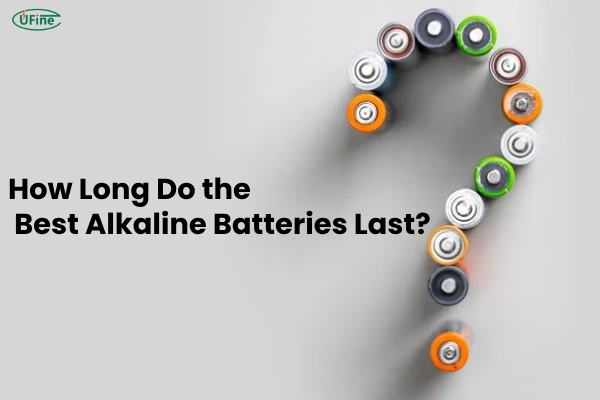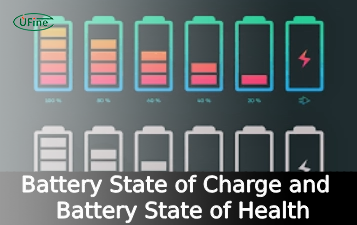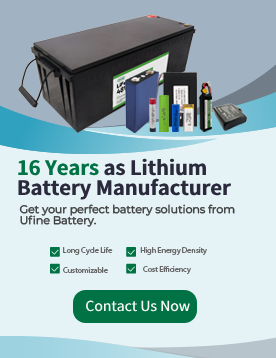
- Part 1. Factors that affect alkaline battery lifespan
- Part 2. Average lifespan of the best alkaline batteries
- Part 3. Top Brands of the Best Alkaline Batteries and Their Lifespans
- Part 4. How to Store Alkaline Batteries for Maximum Life
- Part 5. Signs your alkaline battery is near the end of its life
- Part 6. Alkaline battery expiration dates – do they matter?
- Part 7. How to make alkaline batteries last longer in devices
- Part 8. Safety tips for handling and disposing of alkaline batteries
Part 1. Factors that affect alkaline battery lifespan

The lifespan of alkaline batteries is highly variable, influenced by intrinsic chemical properties as well as external conditions. Here are the critical factors in detail:
a. Brand and Manufacturing Quality
The manufacturing process and material quality dramatically affect battery longevity. Leading brands such as Duracell, Energizer, and Panasonic invest heavily in advanced electrode materials, refined electrolytes, and cutting-edge sealing technologies to reduce internal leakage and self-discharge. For example:
- Advanced sealing techniques minimize moisture ingress and gas escape, significantly extending shelf life.
- Purity of zinc and manganese dioxide electrodes improves chemical reaction efficiency, enhancing capacity and reducing degradation.
- Stringent quality control ensures consistent performance across batches, which is critical for devices requiring reliable power delivery.
Independent tests (such as those by Consumer Reports and Battery University) consistently show premium brands outperform cheaper alternatives by 20-50% in both shelf life and runtime.
b. Device Power Consumption (Load Profile)
The rate at which a device draws current directly impacts battery longevity:
- Low-drain devices (e.g., clocks, remote controls) draw microamps to milliamps, allowing batteries to last years.
- Medium-drain devices (e.g., flashlights, wireless mice) operate in the range of tens to hundreds of milliamps, reducing battery life to months or a few years.
- High-drain devices (e.g., digital cameras, portable speakers) draw amperes, often exhausting batteries in hours or days.
The discharge rate also affects voltage stability. Alkaline batteries maintain voltage longer under low-drain but experience rapid voltage drops under heavy loads.
c. Storage Conditions
Environmental factors during storage accelerate battery degradation via chemical pathways:
- Temperature: Elevated temperatures increase the rate of internal chemical reactions, speeding up capacity loss. A rule of thumb based on Arrhenius kinetics indicates that for every 10°C increase in temperature, the battery’s shelf life roughly halves.
- Humidity: Moisture can cause corrosion at the terminals and compromise the battery’s sealing, leading to leakage and self-discharge.
- Light exposure: UV radiation may degrade packaging materials, indirectly affecting battery integrity.
Storing alkaline batteries at stable, moderate temperatures (15°C–25°C) with low humidity ensures maximum retention of charge over years.
d. Battery Size and Capacity
The physical size correlates with total chemical capacity:
- Larger cells such as D and C batteries have greater internal volume for active materials, thus higher milliampere-hour (mAh) ratings.
- Smaller cells like AA and AAA have less capacity, resulting in shorter runtime under identical load conditions.
For example, a typical alkaline D battery may have about 12,000 mAh capacity, whereas a AAA cell averages around 1,000 mAh. This difference directly translates to longer operational time in devices when using larger batteries.
e. Self-Discharge Rate
Alkaline batteries undergo a natural, slow chemical reaction even when not in use, causing gradual loss of stored energy:
- The self-discharge rate for modern alkaline batteries is approximately 2-3% per year at room temperature.
- This low rate is achieved by improved electrode purity and hermetic sealing.
- Despite low self-discharge, storage conditions can exacerbate capacity loss significantly.
By contrast, older or lower-quality batteries may self-discharge up to 10% annually, leading to reduced shelf life and unreliable performance.
Part 2. Average lifespan of the best alkaline batteries
Here is a data-supported overview of typical lifespan expectations, based on device type and usage:
| Device Type | Example Devices | Average Battery Life |
|---|---|---|
| Low-Drain | Remote controls, clocks | 3–5 years (continuous use) |
| Medium-Drain | Flashlights, wireless mice | 6 months–2 years |
| High-Drain | Digital cameras, gaming controllers | Hours to several weeks |
Shelf Life (Storage):
- Premium alkaline batteries generally maintain 80–90% capacity for 5 to 10 years when stored correctly.
- For instance, Duracell guarantees a shelf life of up to 10 years under recommended conditions, and Energizer MAX claims similar longevity.
Studies from Battery University confirm that alkaline batteries stored at 20°C and low humidity lose minimal capacity for the first 5 years, but accelerated loss occurs if temperature exceeds 30°C.
Part 3. Top Brands of the Best Alkaline Batteries and Their Lifespans
| Brand | Shelf Life | Typical Device Runtime | Key Strengths |
|---|---|---|---|
| Duracell CopperTop | Up to 10 years | 2–3 years (low-drain devices) | Advanced sealing, consistent voltage output |
| Energizer MAX | Up to 10 years | Solid across device types | Leak-resistant design, long shelf life |
| Panasonic Pro Power | 7–10 years | Excels in high-drain devices | High energy density, stable power delivery |
| Amazon Basics Performance | 8 years | Moderate performance | Cost-effective, reliable for everyday use |
| Rayovac High Energy | 5–8 years | Good lifespan at lower cost | Competitive price with decent performance |
Independent lab tests reveal Duracell and Energizer often deliver up to 50% longer runtime than economy brands in high-drain applications.
Part 4. How to Store Alkaline Batteries for Maximum Life
Proper storage is critical to retain battery capacity over time:
- Temperature Control: Ideal storage temperature is 15°C–25°C (59°F–77°F). Exceeding 30°C accelerates capacity loss by up to 50%.
- Humidity Control: Avoid environments with relative humidity over 60% to prevent terminal corrosion.
- Packaging: Keep batteries in original packaging or insulated containers to prevent terminal short circuits.
- Avoid Freezing: Contrary to some beliefs, freezing does not extend battery life and may damage battery seals, leading to leakage.
- Avoid Mixing Batteries: Store batteries separately by brand, type, and charge state to avoid chemical interactions.
Part 5. Signs your alkaline battery is near the end of its life
Detecting failing batteries early protects your devices and ensures uninterrupted use:
- Reduced Device Performance: Dimmed lights or slowed mechanical function signal voltage drop.
- Intermittent Power: Devices shutting off unexpectedly or resetting indicates unstable voltage output.
- Visible Leakage or Corrosion: White, crusty residue around battery terminals is a warning sign of electrolyte leakage.
- Physical Swelling: Bulging or deformation means internal gas buildup, posing safety risks.
- Voltage Testing: A fresh alkaline cell has 1.5V at open circuit; a voltage below 1.0V under load signifies near end-of-life.
Part 6. Alkaline battery expiration dates – do they matter?
Expiration or “best before” dates are more than marketing—they reflect scientifically derived shelf life estimates:
- Batteries guarantee retaining at least 80% capacity until expiration when stored per manufacturer guidelines.
- Using batteries past their expiration date risks reduced runtime, increased leakage likelihood, and lower voltage stability.
- Modern alkaline batteries have very low self-discharge rates, but degradation over time still occurs due to internal chemical reactions.
- For critical devices like medical equipment and smoke alarms, always use unexpired batteries for reliable operation.
Part 7. How to make alkaline batteries last longer in devices
Optimizing battery use extends runtime and reduces waste:
- Turn Off Devices When Idle: Standby mode still draws current; powering down saves battery life.
- Remove Batteries in Long-Term Storage: This prevents slow discharge and corrosion from leakage.
- Use Matched, Fresh Batteries Together: Mixing old and new batteries or different brands causes uneven discharge and accelerates failure.
- Select Battery Type to Match Device Drain: Use alkaline for low-to-medium drain devices; consider rechargeable NiMH or lithium-ion for high-drain applications.
- Minimize High-Current Bursts: Devices that frequently spike current drain (e.g., cameras’ flash) reduce alkaline battery life significantly.
Part 8. Safety tips for handling and disposing of alkaline batteries
Proper handling ensures safety and environmental protection:
- Avoid Mixing Chemistries and Sizes: Combining different battery chemistries or sizes can cause leakage or rupture.
- Wear Protective Gloves When Handling Leaking Batteries: Alkaline electrolyte is corrosive and can irritate skin or eyes.
- Recycle Batteries When Possible: Many regions provide battery recycling programs to recover materials and prevent environmental contamination.
- Never Incinerate Batteries: Incineration risks explosion and toxic gas release.
- Keep Batteries Away from Children and Pets: Battery ingestion is a serious health hazard; store batteries out of reach.
Related Tags:
More Articles

Battery State of Charge and Battery State of Health
Battery SoC vs. SoH explained: Learn professional methods to measure charge levels, test health status, and optimize battery performance for longer lifespan.
Difference Between 18650, 26650, and 21700 Batteries
What’s the difference between 18650, 21700, and 26650 batteries? Compare size, capacity, and performance to find the best lithium battery for your device.
LFP Battery Vs. LTO Battery: A Detailed Comparison
Compare LFP (LiFePO4) and LTO (Lithium Titanate) batteries by energy density, lifespan, safety, cost, and uses in EVs, solar storage, and backup power.
Compare 18650 battery types: Li-ion, LiFePO4, and LiPo. Key specs (voltage/capacity) and best uses for vapes, flashlights, EV batteries.
How to Distinguish Between Grade A, Grade B, and Grade C LiFePO4 cells?
Explore the differences between Grade A, B, and C LiFePO4 cells and learn how to choose the right one for electric vehicles, solar storage, or backup power.


